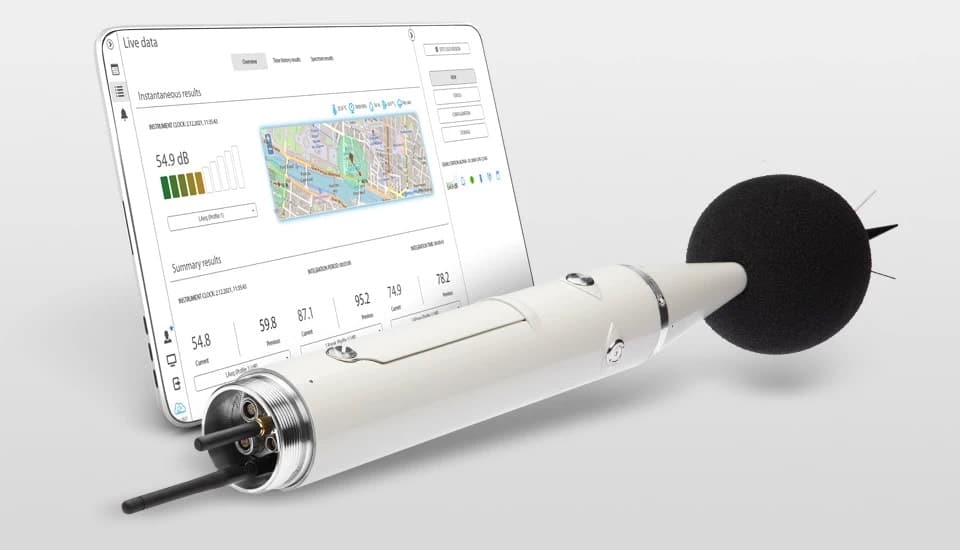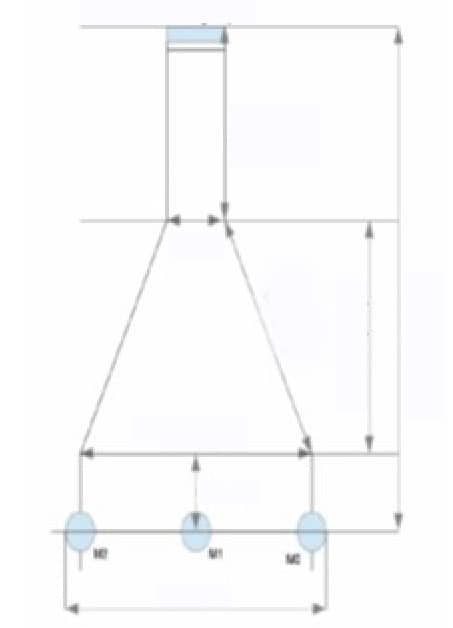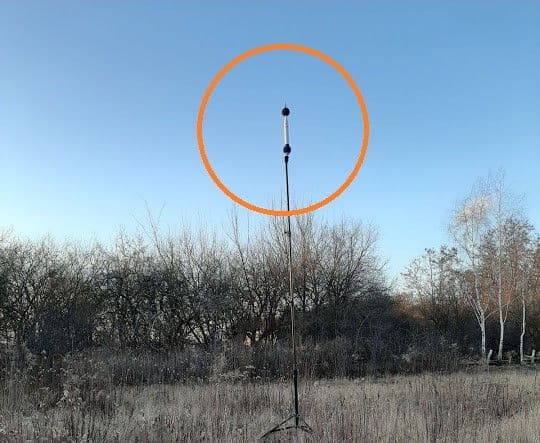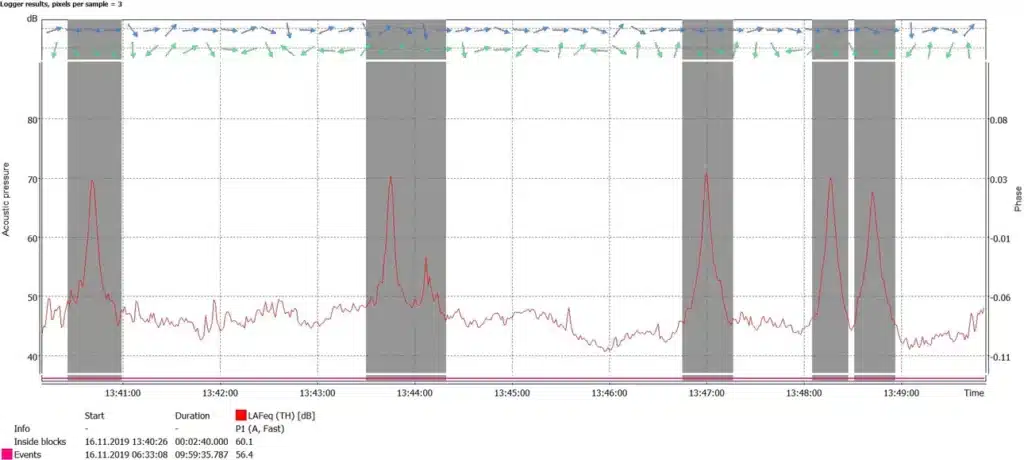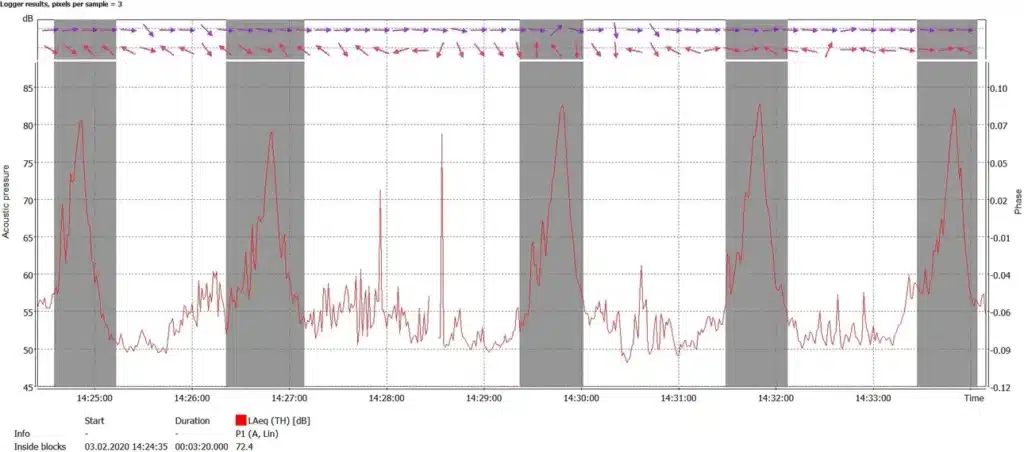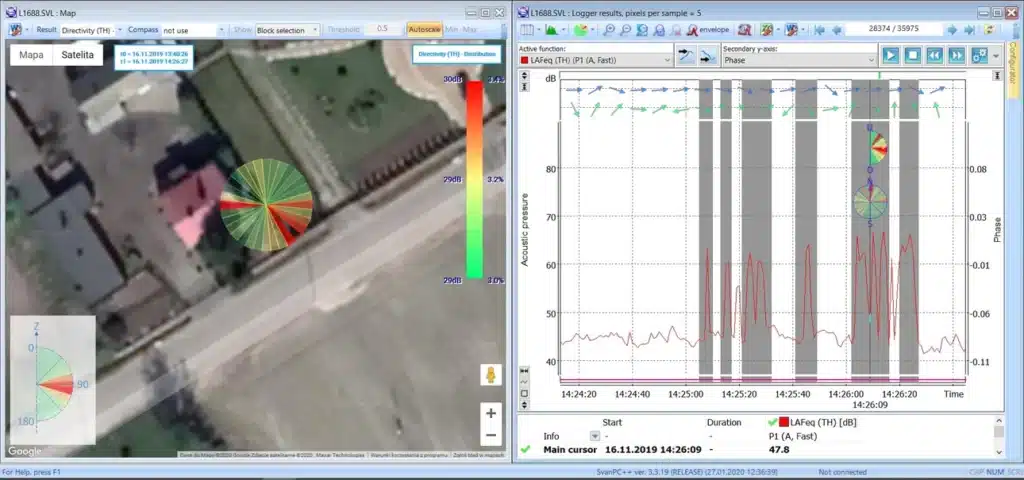Noise Directivity
Improved Methods Of Noise Sources Identification
Addressing the role of noise directivity in environmental noise monitoring, this study presents a comparative analysis of measurement site selection effects, illuminated by an unusual discovery: a dog’s bark perceived as originating from above a noise monitoring setup. This incident not only poses a humorous query regarding the flying capabilities of dogs but also serves as a pivotal example of the challenges in noise source identification, emphasizing the importance of strategic site selection as guided by ISO 1996-2:2017.
Utilizing the SV 200A noise monitoring station, designed to assess noise directivity across horizontal and vertical planes, the study examines two distinct locations near an airport’s flight paths. This comparative approach highlights the influence of environmental and physical site characteristics on the accuracy of noise data collection and the potential for automating event identification processes.
